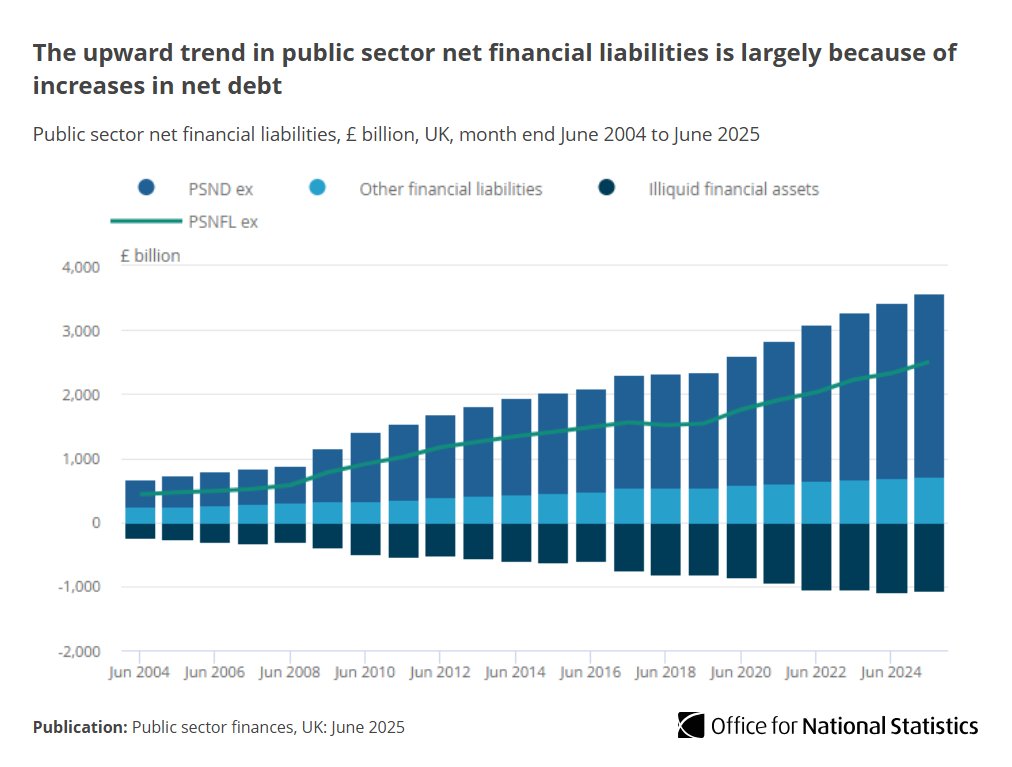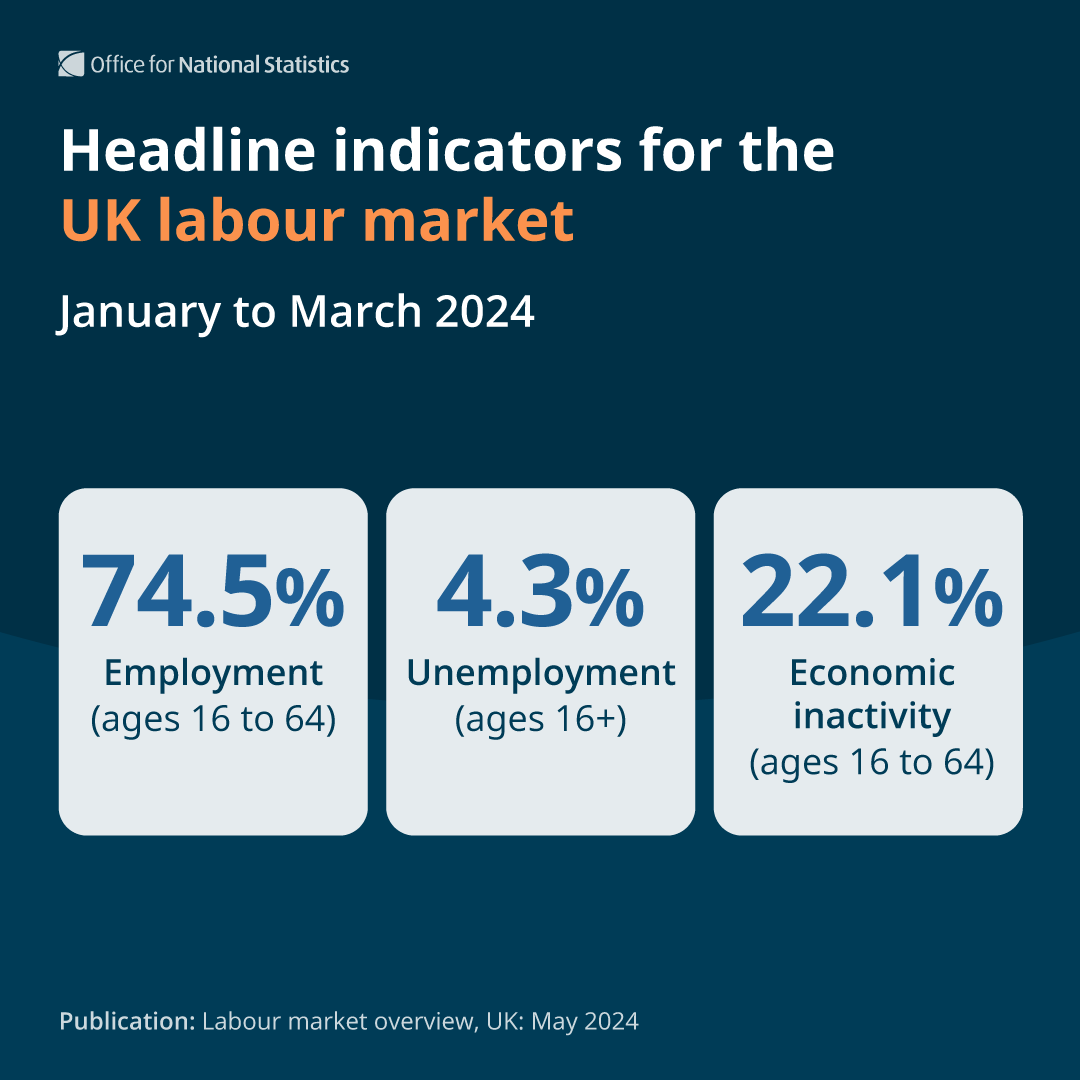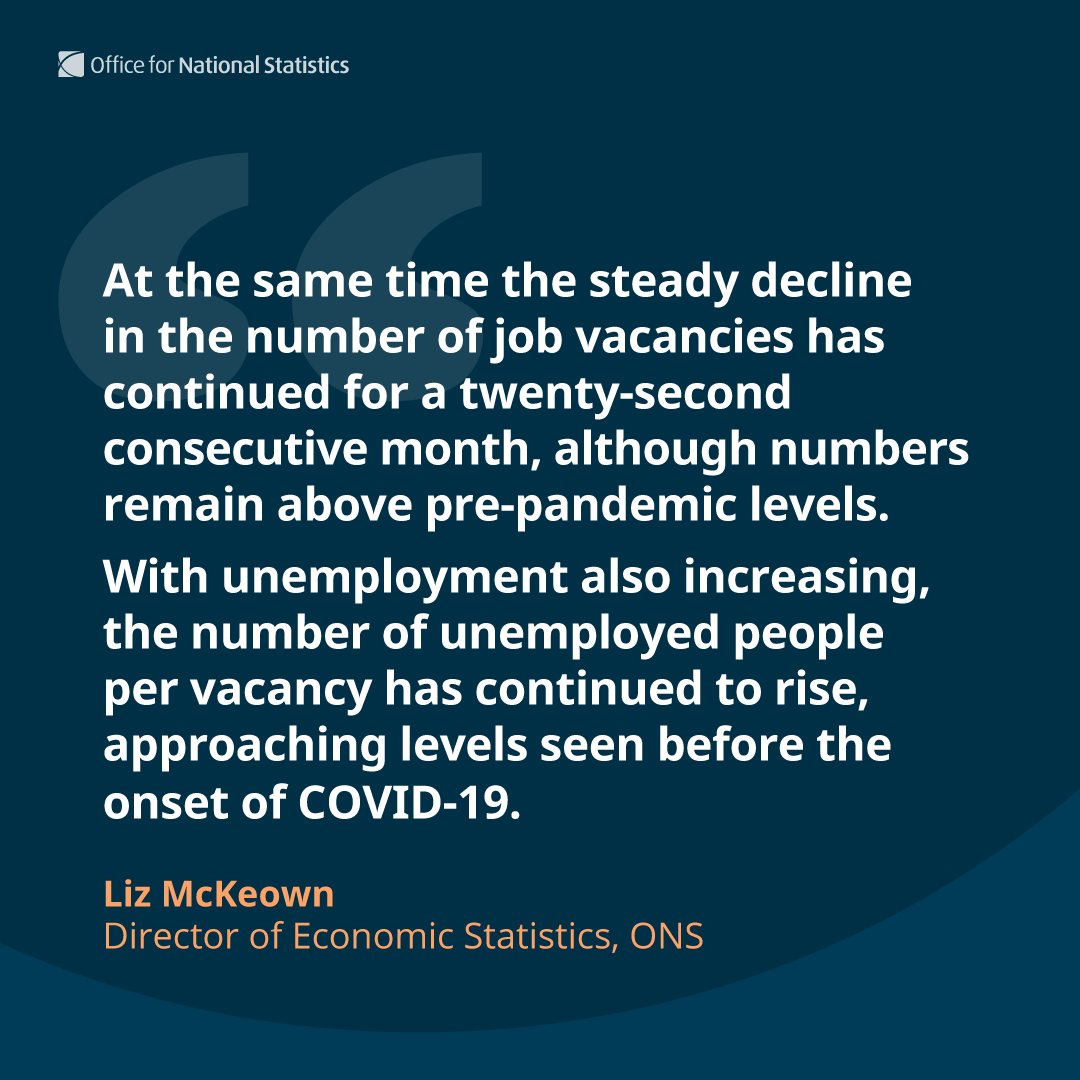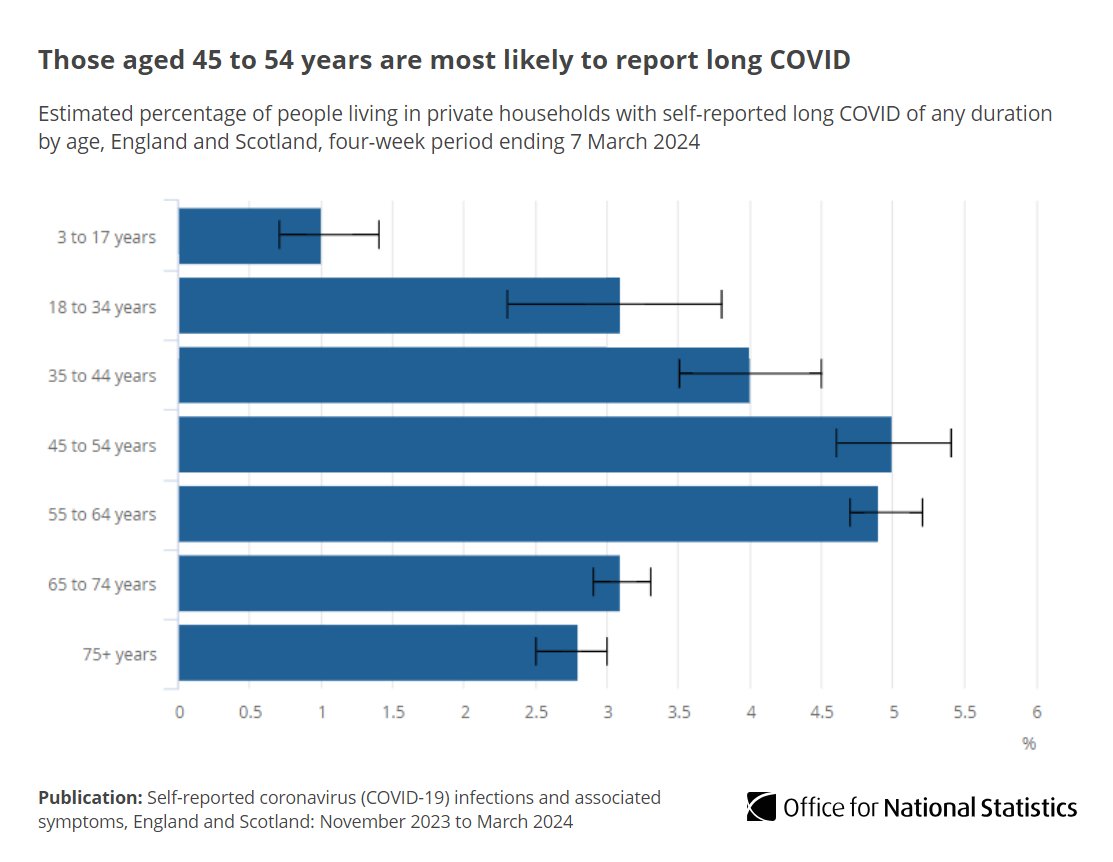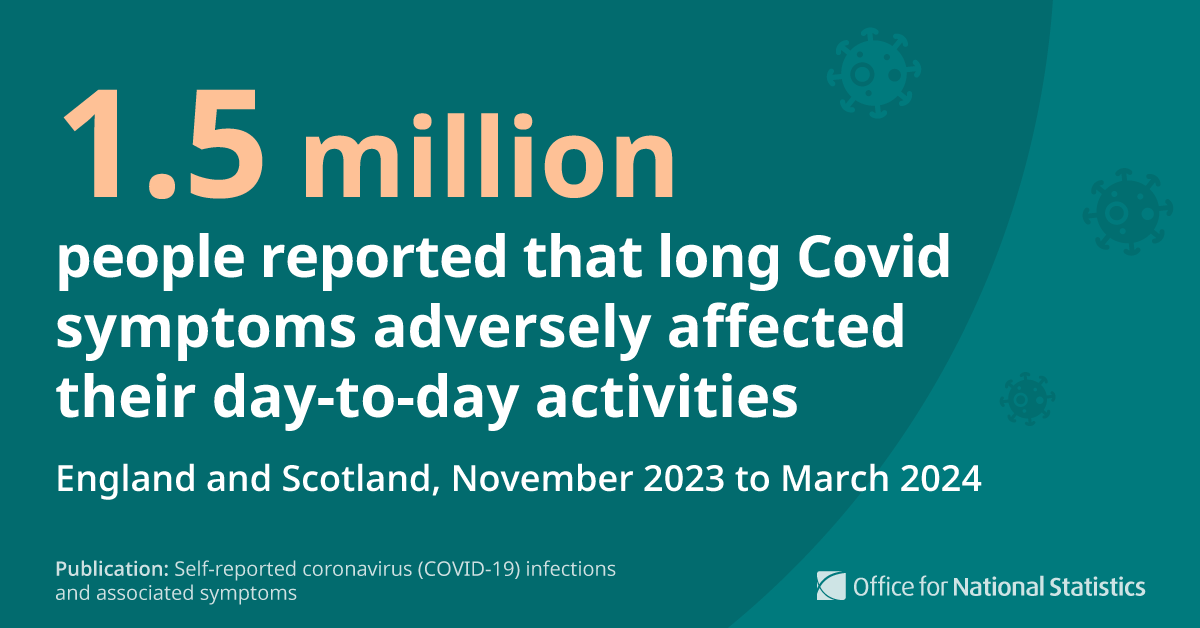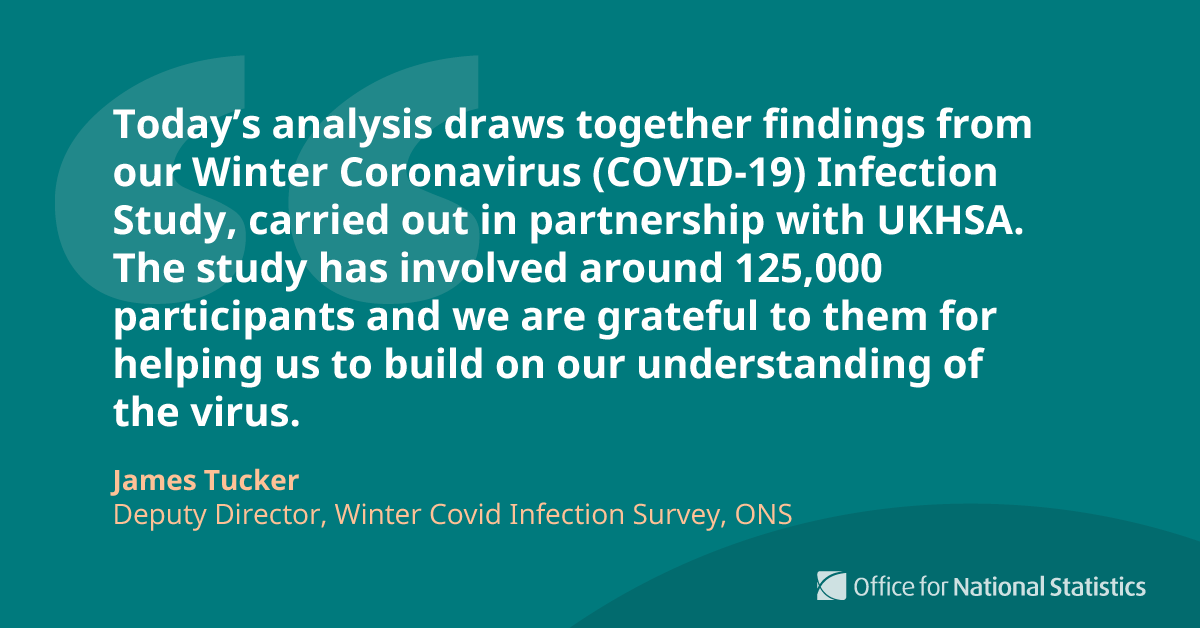Headline indicators for the UK labour market for May-July 2021 show
▪️ employment was 75.2%
▪️ unemployment was 4.6%
▪️ economic inactivity was 21.1%
ow.ly/gy0p50G9pyY
▪️ employment was 75.2%
▪️ unemployment was 4.6%
▪️ economic inactivity was 21.1%
ow.ly/gy0p50G9pyY

The number of employees on payroll rose by 241,000 in August 2021; this took the total just past its pre-pandemic peak ow.ly/nJRX50G9pEf 

Weekly hours worked in the UK increased on the previous quarter, to 1.01 billion hours in May to July 2021, coinciding with the relaxing of coronavirus lockdown measures.
However, this is still below pre-pandemic level ow.ly/TuI950G9pGS
However, this is still below pre-pandemic level ow.ly/TuI950G9pGS
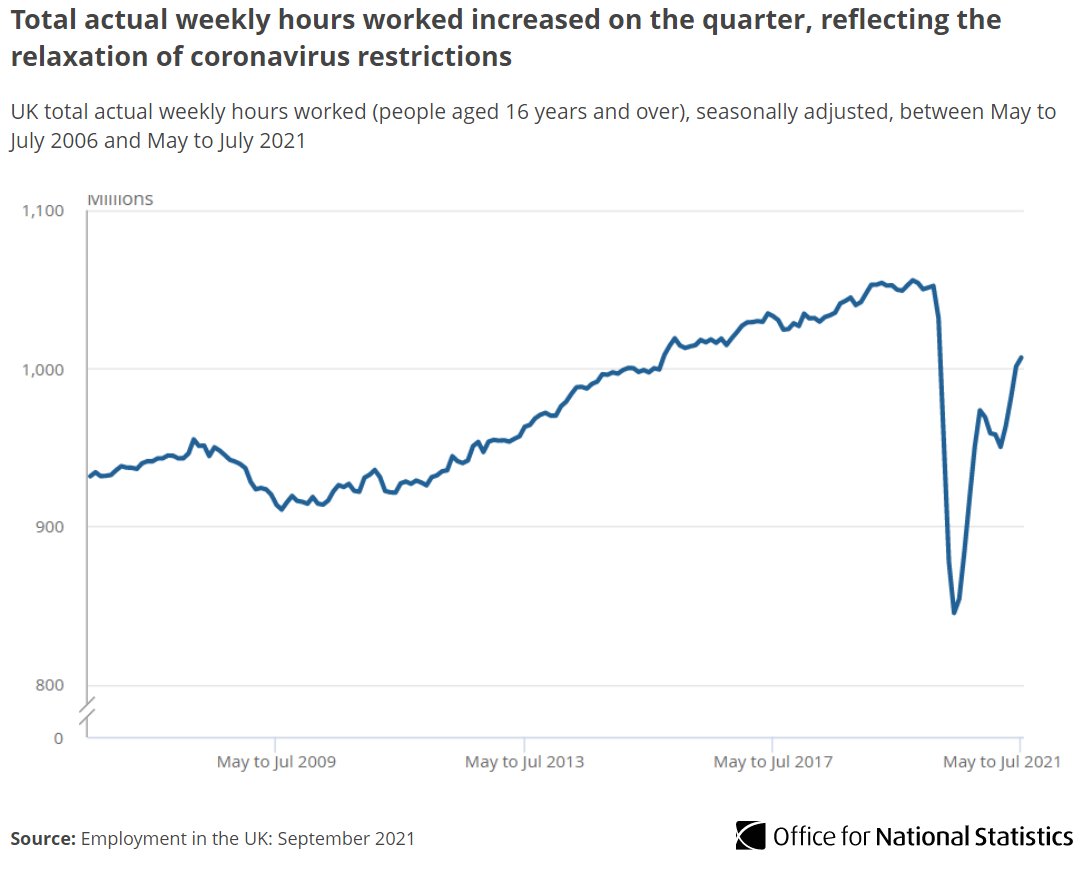
After inflation, average pay saw annual growth of 6.0% including bonuses in May to July 2021, while excluding bonuses it was up 4.5%.
These rises are partly the result of statistical factors, and the underlying picture suggests more modest pay rises ow.ly/yKLX50G9pJH
These rises are partly the result of statistical factors, and the underlying picture suggests more modest pay rises ow.ly/yKLX50G9pJH
There were an estimated 1.03 million job vacancies in June to August 2021, up from 764,000 in the previous three months.
Early figures for August show there were more than 1.1 million vacancies that month for the first time ever ow.ly/ImRv50G9pM0
Early figures for August show there were more than 1.1 million vacancies that month for the first time ever ow.ly/ImRv50G9pM0

Total public sector employment in June 2021 was up 131,000, or 2.4%, on the previous June, largely because of the ongoing response to the #COVID19 pandemic ow.ly/JNxJ50G9pNV
• • •
Missing some Tweet in this thread? You can try to
force a refresh







